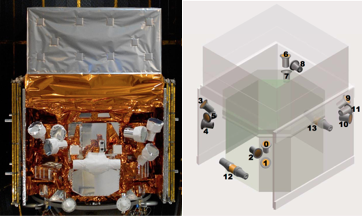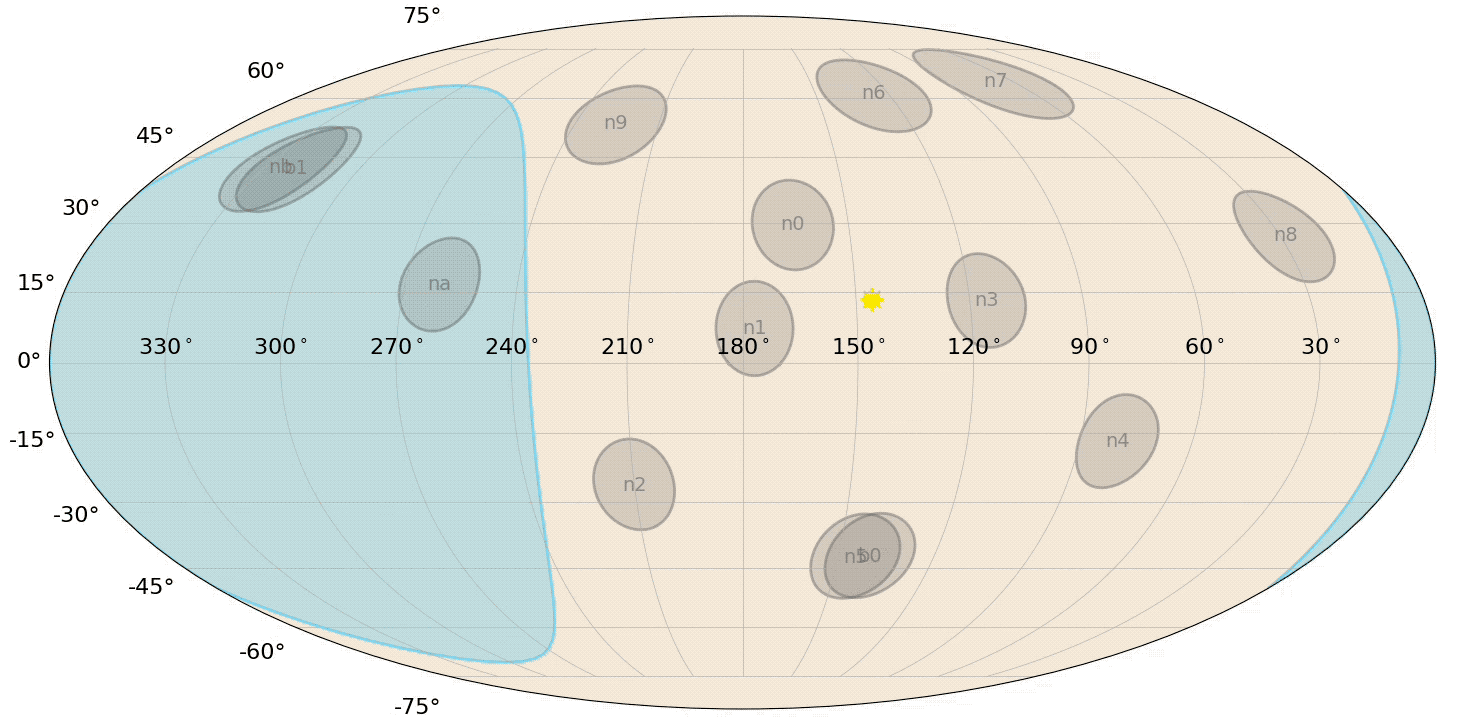Fermi Friday - April 13, 2018

Seeing the whole sky at once – GBM
Posted by Michelle Hui (NASA Marshall Space Flight Center)
The Fermi Gamma-ray Burst Monitor (GBM) is designed to monitor the sky for bursts of gamma rays lasting a fraction of a second to tens of minutes, which can come from gamma-ray bursts, pulsars, black holes, soft gamma repeaters, solar flares, and terrestrial gamma-ray flashes. To see this variety of sources, GBM uses a total of 14 detectors pointing in different directions.

Left: picture of the Fermi Gamma-ray Space Telescope. Right: Schematic of GBM detectors.
Credits: NASA / the Fermi GBM team
The GBM detector configuration covers about 70% of the entire sky in an instant and samples the entire sky every orbit (96 minutes). If we project the sky into two dimensions from our point of view, the animation below shows where the GBM detectors are pointing as the Fermi satellite orbits Earth.

GBM detector pointing directions on the sky. The blue shaded region is the part of the sky blocked by the Earth. Gray circles show each detector's pointing direction. Each detector can observe gamma rays up to +/- 90deg from its pointed direction.
Credit: Adam Goldstein
Although the GBM's primary targets are gamma-ray flashes from space, some of its detectors are always looking down toward Earth. Because of this, GBM also sees gamma-ray flashes (and even some antimatter) coming from thunderstorms on Earth, as shown in the video below. From the Fermi spacecraft orbit, GBM can detect Terrestrial Gamma-ray Flashes (TGFs) from Central and South America, Africa, Asia, and Australia.
Since TGFs are coupled with thunderstorms, which happen more often in summer months, GBM sees seasonal variations in the location of TGFs, as shown in the animation below.

Locations of Terrestrial Gamma-ray Flashes seen by Fermi-GBM. In the Northern hemisphere, TGFs are typically seen from July through September. In the Southern hemisphere, TGFs are more common from December through March.
Credit: The Fermi GBM team.


